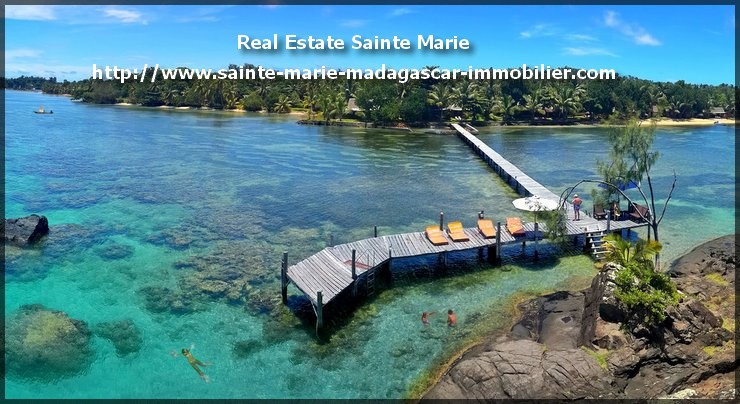Sainte-Marie Island
Sainte-Marie Island.
Off the east coast and north of Toamasina, Sainte-Marie Island is a resort haven of exquisite sweetness. Worse and less developed than cousins Nosy Be, Sainte-Marie still conveys a small preserved and traditional side that sometimes seems to be lacking in Nosy Be. The long beaches of fine sand, lined with coconut trees, are splendid and the lagoons contain many treasures that scuba diving will soon make you discover. Many small islets reach you like the island with the mats, in the South. Do not miss the pirates’ cemetery with its skull tombs and evocative epitaphs. Marine wildlife enthusiasts will be filled between July and September with whale passage between the Malagasy coast and the west of the island. They are often many to stay in the area to mate and give birth which gives rise to unforgettable observations.
Sainte Marie, a paradise island in the heart of the Indian Ocean. An oasis of natural greenery with its primitive forests, its floral species, its waterfalls, its underwater and humpback whales, Sainte Marie is a tropical paradise at the end of the world, still preserved from mass tourism: the simple luxury of a haven of peace and resort with exquisite sweetness.
Sainte-Marie Island, formerly known as Nosy-Ibrahim, now Malagasy Nosy Boraha (little used), is an island located north-east of Fenoarivo Atsinanana (Analanjirofo region) in front of Soanierana Ivongo. is separated by a channel 30 km (16 miles) wide.
A tourist destination, Sainte-Marie Island is known for its authentic and preserved character, its grouping of humpback whales, its romantic history and the welcome of its inhabitants.
Some 40% of the island’s population understands or speaks French, making it the most Francophone region of Madagascar. There are many English-speaking tourist guides on Île Sainte-Marie, which attracts foreign visitors.
A sanctuary of whales.
The island welcomes each year during the austral winter a spectacular ballet. Large groups of humpback whales (Megaptera novaeangliae) migrate from Antarctica to the St. Mary’s Canal, an ideal breeding ground. These peaceful giants find here favorable conditions for the growth of young people and their games in love and acrobatic before the big return to the cold seas.
Endemic fauna and flora.
The insularity of the site and the peculiarities of the coral soil have favored various adaptations, both animal and vegetable, resulting in unique interrelationships. Sainte-Marie is endowed with a rich fauna and a flora, one meets there among other species several types of lemurs as well as a multitude of orchids, among which the magnificent Queen of Madagascar – Eulophiella roempleriana – pushing on Pandanus and endemic from the island to the mats.
A luxuriant vegetation.
The island has many nicknames including that of the “garden island”. Due to a constant micro-climate throughout the year, Sainte-Marie has a remarkable vegetal luxuriance. While the various spice cultures (cloves, cinnamon, vanilla, coffee, pepper) proliferate there, Sainte-Marie has also kept a wide range of different tropical sylves existing in Madagascar, including a real primary forest.
Transport.
The island has its aerodrome. It is also accessible by sea from Soanierana Ivongo or from the beach of Mahambo-Ambany (89 km north of Toamasina) by the El Condor building.
Tourist assets.
Beaches of coral sand and coconut palms.
Mangroves with mangroves
Berries and lagoons
Dry (north east) and wet (west center) forests
Strong interculturality
Authentic, reasoned tourism
Architecture.
In Ambodifotatra:
The Church of St. Mary, located at the southern exit, whose construction ends in 1857, the oldest Catholic Church in Madagascar1.
Former Fort of the French East Indies Company
The funeral stele of F.F.J.Albrand (1795-1826)
The cemetery of pirates
North of the island:
The Albrand landing light (18 m tower built in 1931)
On the island Madame:
The Residence, with its aquarium
The ossuary monument of the French-English merchants assassinated, in 1845, in Tamatave
Climate
At the latitudes of Sainte-Marie, the oceanic flow of the trade wind meets almost perpendicularly the steep relief of the east coast of Madagascar: it brings a significant annual rainfall (more than 3,500 mm). The island has a humid tropical climate.
The monthly rainfall distribution is above 300 mm except for the sunniest months of September, October and November. Temperatures vary from December to March between 34 ° (the day) and 25 °.




